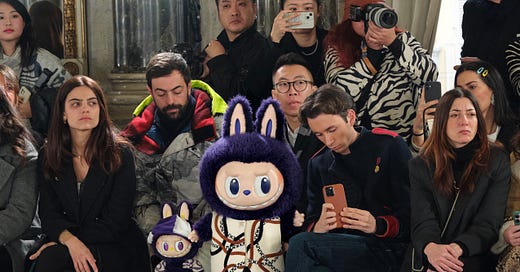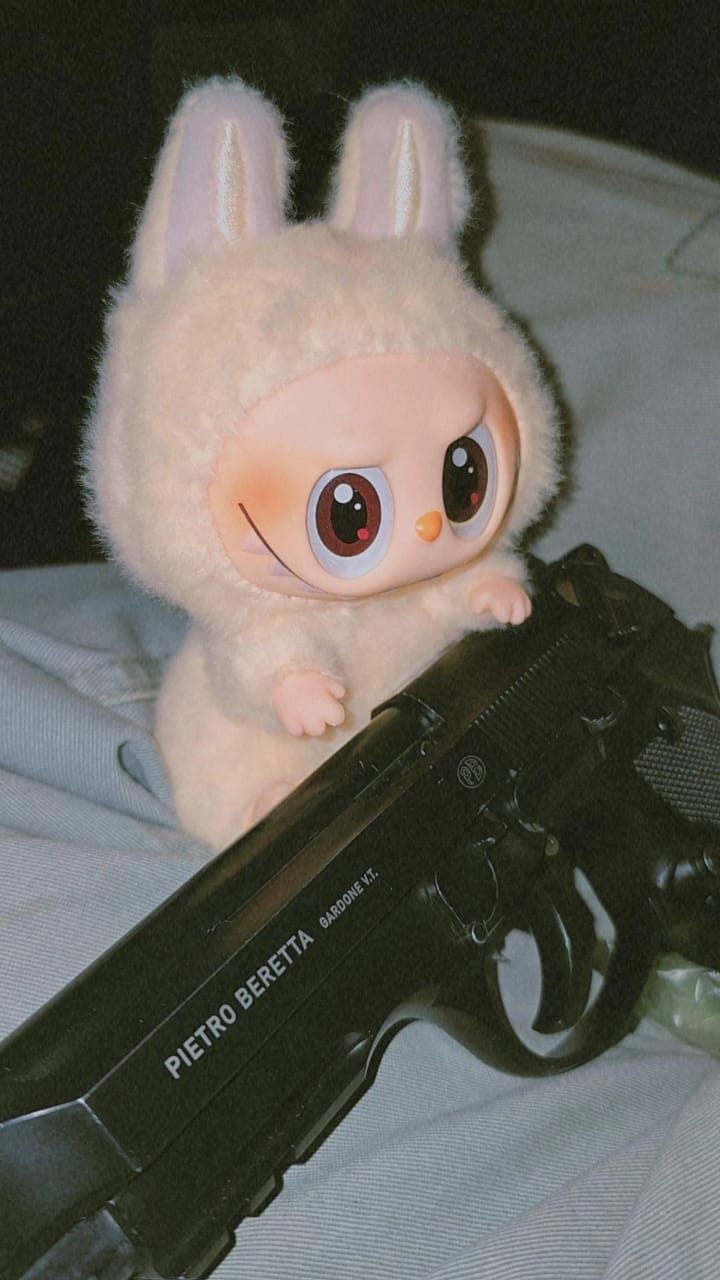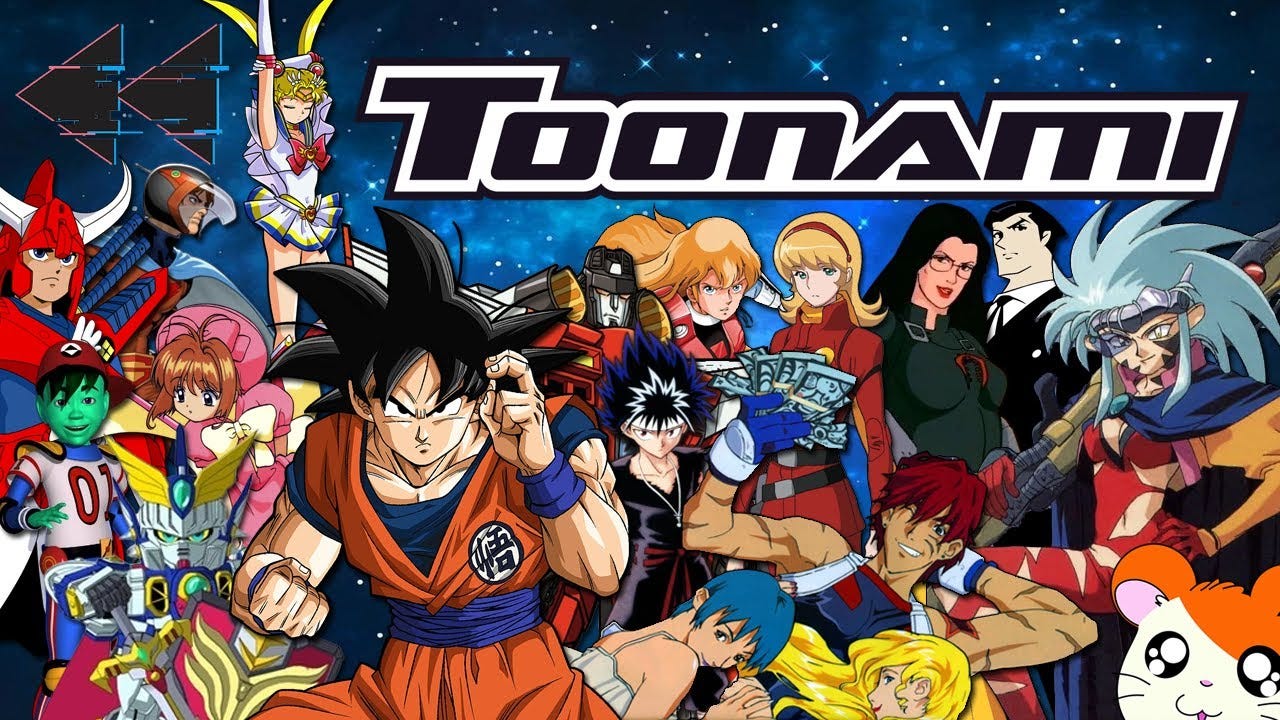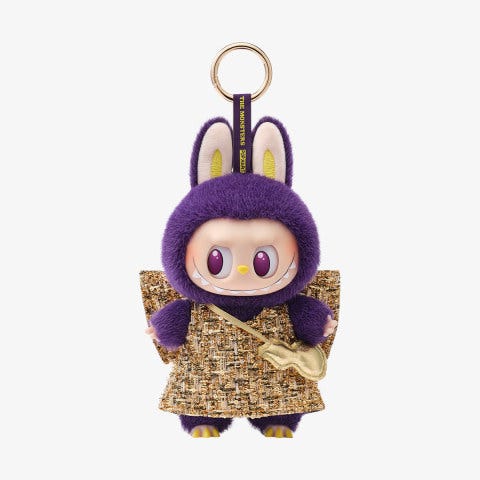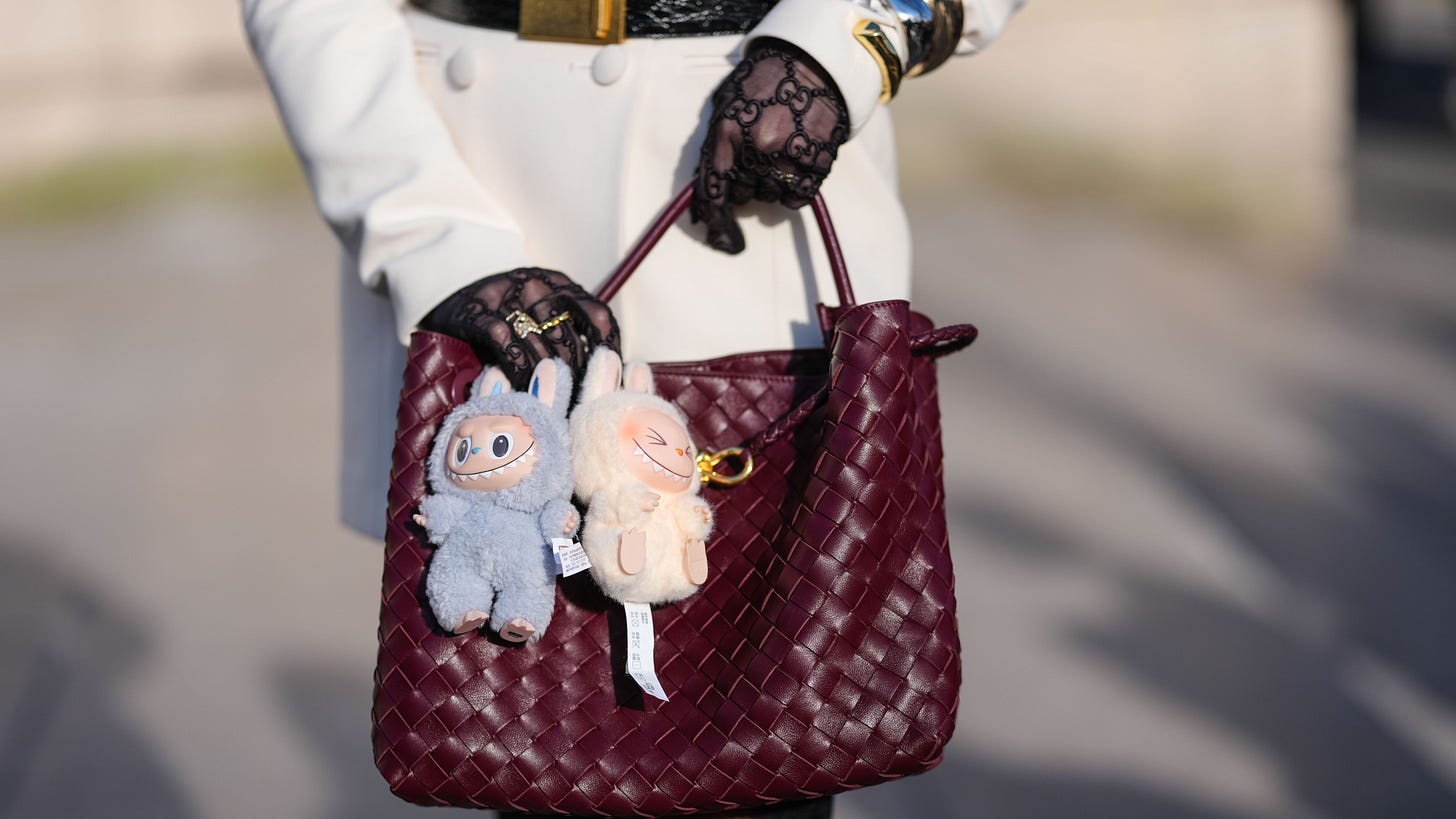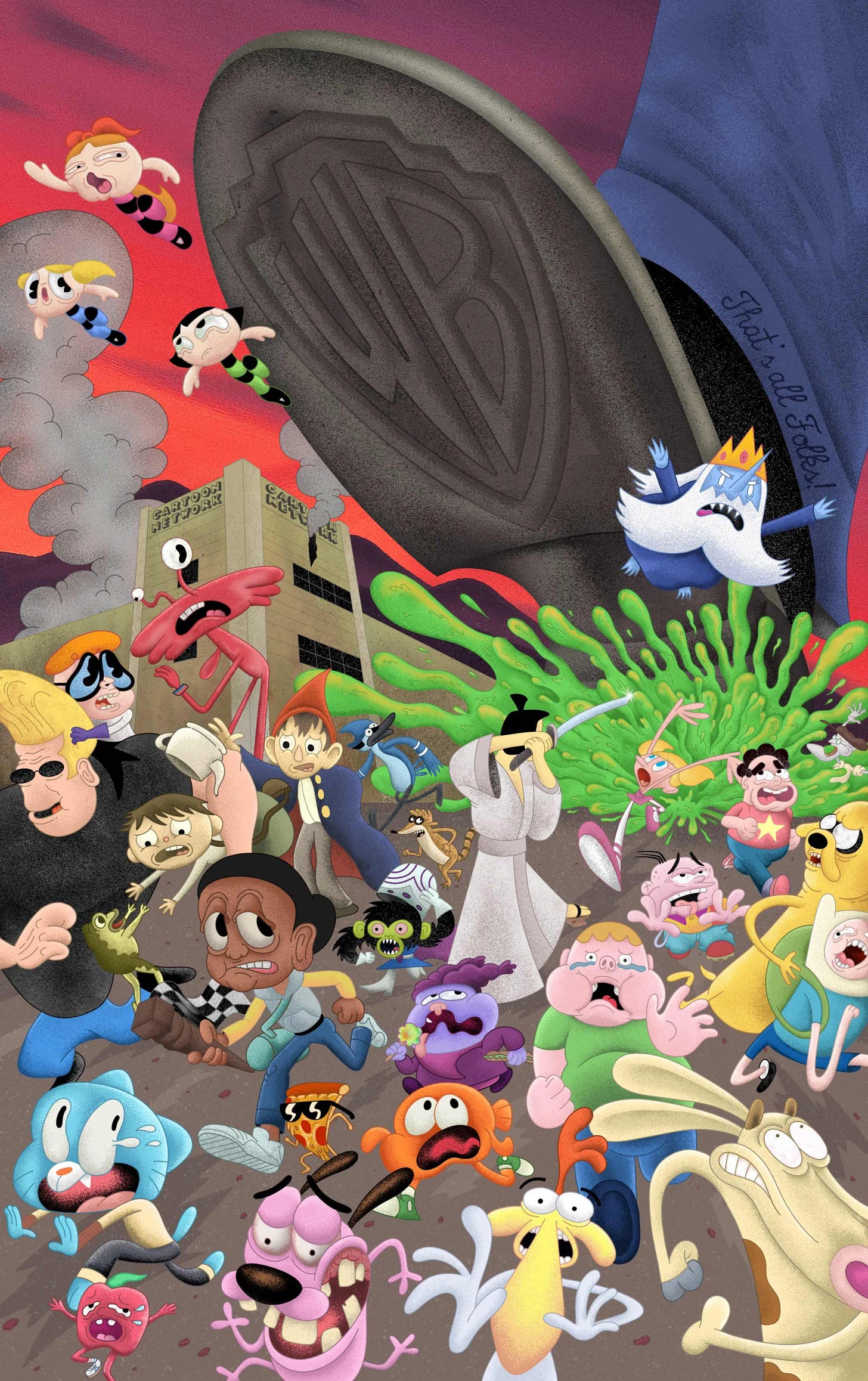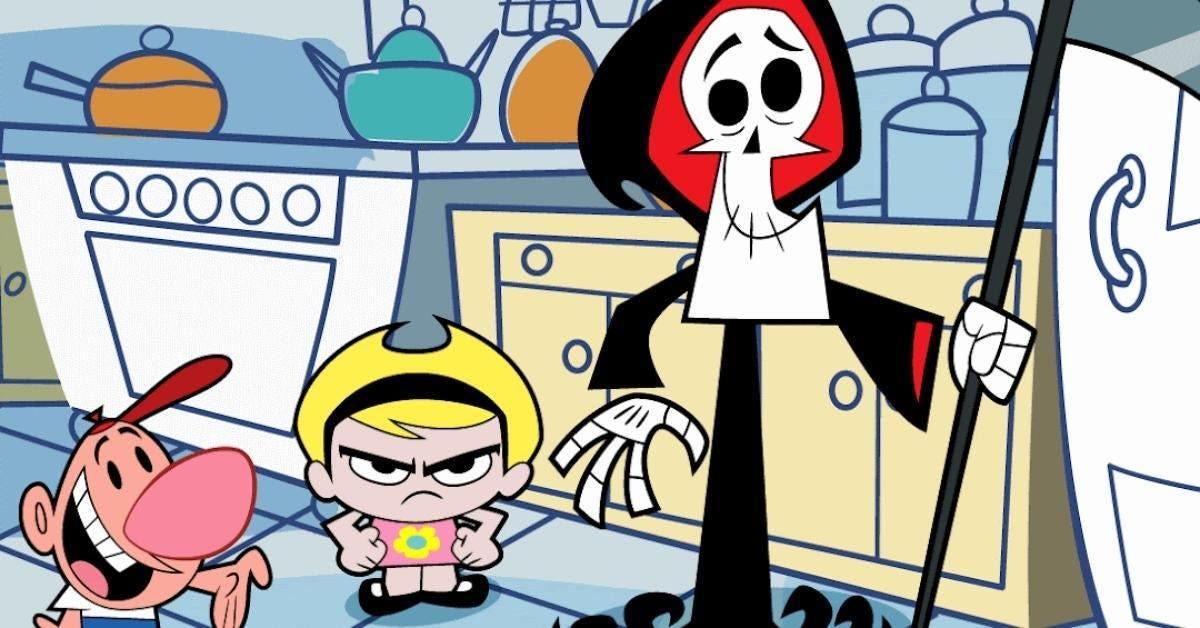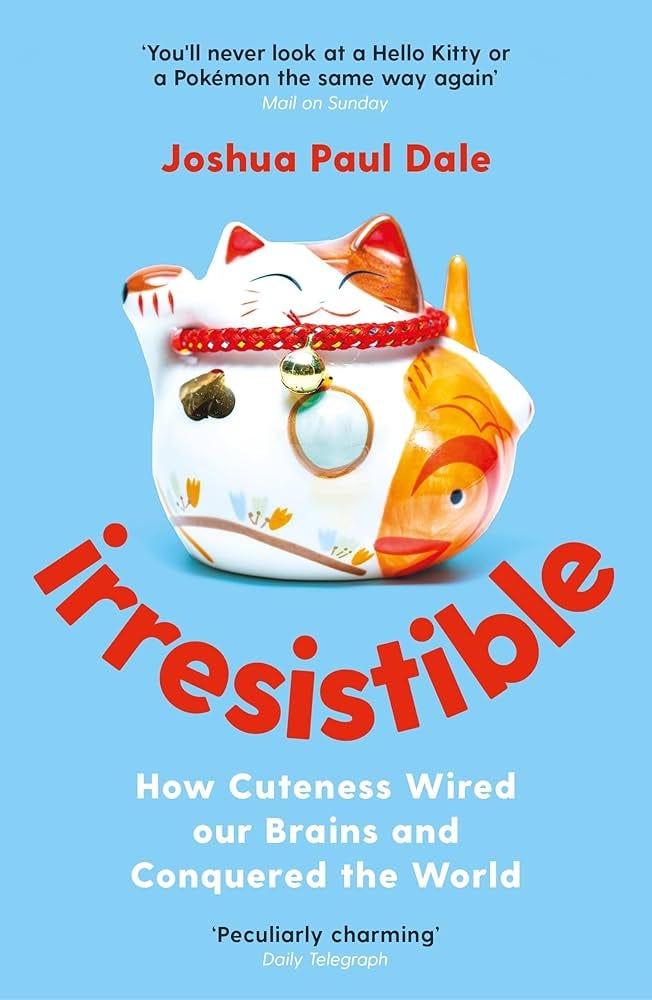A New Weird: Cartoon Network dies 😔 but Labubu thrives. Here's why.
While Warner Bros. Discovery kills the beloved CN brand, Labubu thrives. Appetite for acceptable oddity won't die with CN. It's just moved from risk-averse networks to designer collectibles.
////////////RADIO KNIFE, IS SO F#CKING BACKahhhhHHHHH///////////
Famously, Apple's model has always been to cannibalise itself across categories when developing new ones, to ensure it stays ahead of the market (the one it leads across most categories). They gladly shot themselves in the foot, killing the iPod, and then grew a whole new billion-dollar body with the iPhone. They always look to defeat their last best product to ensure they remain their only competition, and therefore remain market leaders.
Although Labubu and Cartoon Network live in a relative opposite space, it's very easy to see how, in the pre-streaming media landscape, a Labubu animated series would become property of Cartoon Network. Labubu is straight from the CN playbook: a bizarre take on something innocuous. That is the Cartoon Network axis. You have Dexter, a small, geeky kid. Who is somehow the only person in his middle-class, middle American family with a strong Bavarian accent. Or, Take Grim, the Rastafarian Grim Reaper. Brilliantly juxtaposed - his joyful Patwa lilt makes you forget you're looking at a skeleton with a scythe. Only Cartoon Network could pull this off: spinning cultural beats and real-life settings into animated worlds that felt both familiar and wonderfully bizarre.
I was a kid raised on CN, I owe the zany edges of my imagination to watching the wacky 2D hijinks of Cartoon Network's golden age of original programming throughout the 90's and the early 00's - when Toonami and Adult Swim came along and node by node, shifting the mechanics of my frontal cortex once again.
The Corporate Spillage Problem
But in recent years, the media landscape has witnessed a stark decline in creator-driven animation, most notably in the transformation of once-iconic networks like Cartoon Network and their golden goose sub-brand, Adult Swim. Once hubs of offbeat, innovative storytelling and distinct artistic voices, these channels are now shadows of their former selves. Under the leadership of David Zaslav, original programming has been slashed, budgets trimmed, and studios carelessly merged. This has left fans and creators alike mourning the slow disappearance of a cultural force that shaped the childhoods and imaginations of millions.
Warner Bros. Discovery's (WBD) cost-cutting agenda has consolidated CN under a homogenised HBO Max brand, slashing original programming and hollowing out the identity that made the network a cornerstone of alternative animation. However, while the traditional animation industry stumbles, another cartoony cultural phenomenon has been rising: Labubu.
This unexpected, intensely weird emotive art toy is rapidly staking a claim as a character that could rival the mass appeal of Cartoon Network's heavyweights. But the funny thing is, this clamour is being driven by an unexpected segment: not nostalgia-hunting kidults, but female luxury fashion consumers.
It's a gremlin-like plush doll with jagged teeth, rabbit ears, and a cultish following among women of all ages. The rise of this strange collectable is more than just a viral fashion accessory. It represents a counter-narrative to the corporate spillage of modern animation, showing how audiences, across generations, are still hungry for emotionally resonant, offbeat experiences, even if they now wear them instead of watching them.
When Networks Lost Their Weird
Cartoon Network, once the cradle of eccentric genius in shows like Courage the Cowardly Dog, The Grim Adventures of Billy & Mandy, and Samurai Jack, has been forcibly dragged away from its roots. With the merger of Cartoon Network Studios into Warner Bros. Animation and the removal of classic shows from the Max platform, the network's unique identity has more or less dissolved. According to a Cartoon Brew analysis, only 13% of 10-to-12-year-olds have recently watched programming on Max, compared to 32% on Hulu, 57% on Disney+, and 72% on Netflix. Big yikes.
WBDiscovery have leaned into cost-efficiency, data-driven content creation, and "franchise synergy," while sidelining original animation that once gave CN its voice (this pivot is reminiscent of John Donahoe's doomed strategy and stint as Nike CEO). For fans, this is personal. A generation that found solace, creativity, and identity, many of whom are parents now, wanting to pass those same beloved franchises on, are watching those worlds fade as victims of corporate streamlining.
Enter the Gremlin
Meanwhile, Labubu dolls, with their creepy, impish features and folkloric design, tap into the very same aesthetic strangeness that these shows once celebrated. Labubu, like the best of animation, thrives on contradiction. Simultaneously mischievous and innocent, eerie and endearing. The character invites interpretation and emotional projection, much like the weird but lovable protagonists of early 2000s cartoons.
Labubu's rise through a mix of grassroots fandom and big brand runway moments has led to a virality that's seen the hashtag #labubu garner over 1.4m mentions on TikTok. This underscores a core truth: adults still have a deep commitment to characters that are weird, whimsical, and full of personality. Is Labubu a visual representation of the monkey mind? And rather than CN cashing in on its franchises, through accessories, its misprofiled position in the relaunched HBO Max family has created space for products like Labubu to emerge.
The doll's appeal is as layered as its jagged grin. Unlike the plushy mascots of past kawaii culture, Labubu dolls combine cutesy with a slightly unnerving edge. Protruding teeth and wild glints in their eyes. Professor Joshua Dale, author of Irresistible: How Cuteness Wired our Brains and Conquered the World, says they act as salves for consumers - that Labubu toys are "happiness generators," that offer "self-healing" for overstimulated adults. This is likely why in the UK alone, the toys-for-adults’ ‘‘kidult’’ market is now worth £1 billion, and 1 in 3 pounds spent on toys comes from kidult consumers.
The Chaos Element
Labubu fans and buyers are mostly women who drive 80% of consumer spending. So, it makes sense that they might feel burned out by polished, algorithm-friendly media, endlessly trying to sell them stuff. Ironically, it's a fluffy toy that offers a respite. Labubu dolls are sold in blind boxes, creating a physical, unpredictable, Pokémon-card-booster pack-like experience. So maybe Labubu’s appeal is that they represent the chaos element of the female consumer. A readiness to escape from expectedness, to challenge the product and content carousel brands target and re-target them with. By randomising their tastes with things like Labubu, they’re obscuring their motivations, making them harder to sell to? Labubu’s popularity might be female consumers reclaiming a sense of agency from a product landscape that’s come to expect their cash, rather than earning it.
The chaos they create in retail has given them notoriety, with Pop Mart temporarily halting UK in-store sales for "safety reasons." Rare dolls start at £17.50 and can resell for over £1,500. Pop Mart's international earnings jumped to $1.06 billion in 2023 due to Labubu mania.
From Screens to Shelves
The rise of Labubu dolls also underscores the growing power of tactile, collectable art in an age of ephemeral digital media. Vinyls, books, CDs. People are increasingly reverting to physical media to re-engage with the things they like. It’s a way to legitimise their why - physical context makes the exchange more valuable.
The popularity of Labubu also represents an important shift in how narratives are constructed and consumed. While Labubu dolls do not tell stories in the traditional sense, fans imbue them with meaning, lore, and personality through unboxing videos, fan art, and curated Instagram displays. This participatory culture mirrors the communal spirit of early online forums that celebrated shows like Adventure Time or Steven Universe. Where networks have pulled back from cultivating such communities, Labubu has invited fans in, providing a blank slate upon which they can write their own stories. With that said, brands are lurking - with a potential Nike collab via the Kobe brand teased. Given Kobe’s huge popularity in China, a collab would make total sense - and could be a bit of a masterstroke if there’s a WNBA element worked into the strategy, too.
This reversal of creative roles, where corporations erase stories while consumers and communities rebuild them, represents a broader commercial rebalancing. Labubu is not a franchise carefully optimised for global market appeal; it's not a Barbie or a Furby. It is a weird, Murakami-inspired niche art toy that has become a cultural phenomenon precisely because it wasn't trying to be one.
To me, it looks like Labubu began as a self-parody of collectable culture and kawaii culture at large, then its popularity forced the creators to take it seriously. As happens with most cultural parody now. But… There's a bigger question here: is genuine parody even possible anymore? Or are we so hungry for contrarian takes that a parody immediately becomes mainstream?
The Heart of Fandom
Labubu's appeal is not accidental. It represents a generational desire for creative self-expression, affective connection, identity signalling and aesthetic risk-taking traits once embodied by the mass-yet-counter-cultural CN. As streaming executives hollow out these legacy brands in pursuit of short-term gains, they underestimate their audiences.
But the stark polarities of both CN's dwindling fortunes and Labubu's rise tell us one thing: the heart of fandom isn't driven by scale. Or uniformity. It's driven by meaning.
📡 That was a RADIO KNIFE transmission. Thanks for listening.📡
Written by Damola Oladapo, founder of House Captain and freelance strategist and copywriter. His strategic work spans global brands including Nike, Diageo, Brooks Running, and EA SPORTS FIFA.
RADIO KNIFE connects the dots between culture and commerce, delivering sharp insights that reveal how global trends, consumer shifts, and cultural moments shape the brands and behaviours around us.
Subscribe for weekly (hopefully) analysis that cuts through surface-level takes to uncover why things work the way they do.
ALWAYS ARRIVE UNPREPARED.


